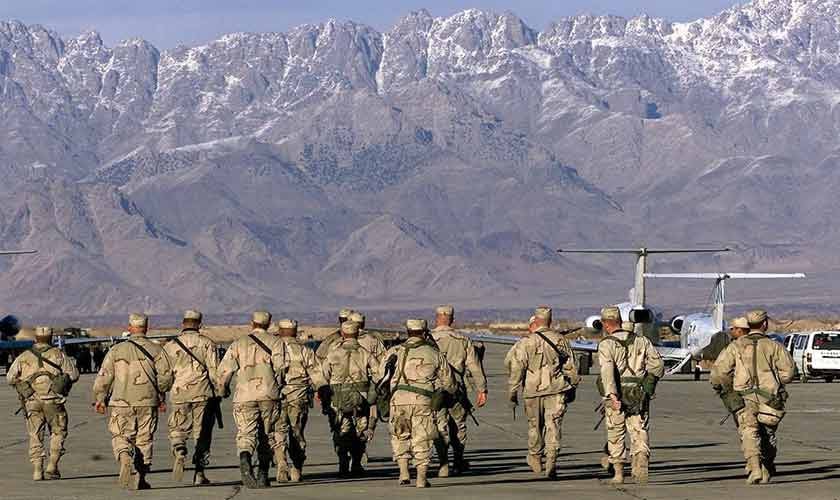If Afghanistan Doesn’t Return Bagram Airbase to the United States, Consequences Could Follow, Warns Former President Donald Trump
Bagram Airbase, the largest U.S. military site in Afghanistan, has become a focal point in discussions about the U.S. withdrawal from the country. The airbase has been described as the “original sin” of the evacuation, notably highlighted in *Left Behind*, a minority report by the U.S. Senate Committee on Foreign Relations from February 2022.
### Trump’s Renewed Calls to Regain Bagram
During a recent state visit to the United Kingdom, former U.S. President Donald J. Trump reiterated his intention to regain control of Bagram Airbase. This wasn’t his first time addressing the matter; after the U.S. withdrawal from Afghanistan in 2021, many Republicans criticized the Biden administration’s handling of the exit, pointing out that the U.S. could have at least maintained control over Bagram.
Dr. Paul Poast, Deputy Dean of Doctoral Education in the Social Science Division and Associate Professor in the Department of Political Science at the University of Chicago, explains that Trump’s focus on Bagram resonates with his supporters who view the loss of the base as a significant grievance against the previous administration.
Trump has claimed that the U.S. surrendered Bagram to the Taliban “for nothing.” However, it is important to remember that the U.S. troop withdrawal was part of an agreement made during Trump’s first term in 2020, with the full withdrawal completed under President Joe Biden’s administration in 2021.
### Defense Officials Defend Vacating Bagram
In testimony before the House Armed Services Committee, Secretary of Defense Lloyd Austin defended the decision to vacate Bagram Airbase. He argued that maintaining the base would have required deploying up to 5,000 U.S. troops to operate and defend the facility, placing them at significant risk.
### Strategic Importance Linked to China
According to a BBC report from March, Trump indicated that his desire to retain Bagram was not primarily about Afghanistan, but rather concerns about China. During a press conference alongside British Premier Keir Starmer, Trump emphasized the importance of controlling Bagram because it is “an hour away from where China makes its nuclear weapons.”
Trump’s reference most likely points to China’s Lop Nur nuclear testing site in the Xinjiang Uyghur Autonomous Region desert. However, under the 2020 Doha Agreement, the United States pledged not to use or threaten force against the territorial integrity or political independence of Afghanistan, or to interfere in its internal affairs.
Professor Poast notes that retaining Bagram could enhance U.S. capabilities to conduct operations in proximity to both China and Iran. This aligns with an apparent realization on Trump’s part of the strategic value in maintaining a global U.S. military presence.
### BBC Investigation on China’s Nuclear Site
Contrary to concerns of significant activity, a July investigation by BBC Verify, which reviewed 30 satellite images from late 2020 through 2025, found minimal activity at the Lop Nur nuclear testing facility since the Taliban’s return to power. Moreover, there was no evidence indicating any Chinese military presence related to the airbase or the region.
### Taliban’s Response and Regional Implications
Zabihullah Mujahid, the chief Taliban spokesman, urged the U.S. to adopt “realism and rationality” instead of repeating previous mistakes. He reaffirmed the Islamic Emirate’s strong stance on Afghanistan’s independence and territorial integrity, reminding the U.S. of its commitments under the Doha Agreement.
In his statement, Mujahid emphasized that Washington must remain faithful to its promises and abandon failed policies from the past. He also cautioned regional countries about the potential repercussions of a renewed American presence at Bagram.
### Regional Geopolitical Dynamics
A U.S. return to Bagram could complicate the delicate balance in South Asia. Pakistan, which manages a complex relationship with both the U.S. and China, might face heightened geopolitical challenges. The country recently entered into a landmark Strategic Mutual Defence Agreement with Saudi Arabia, which considers an attack on either party as an attack on both.
With the world watching closely and the possibility of more Arab nations joining similar defense pacts, the U.S. military presence at Bagram could push Pakistan into a precarious geopolitical tightrope, intensifying regional tensions.
### Conclusion
The future of Bagram Airbase remains a contentious issue with far-reaching implications. While the U.S. weighs the strategic advantages of retaining the base, diplomatic commitments and regional stability hang in the balance. How Afghanistan and its neighbors respond to these developments will shape the geopolitical landscape for years to come.
https://www.thenews.com.pk/tns/detail/1346842-bagram-back-in-play

